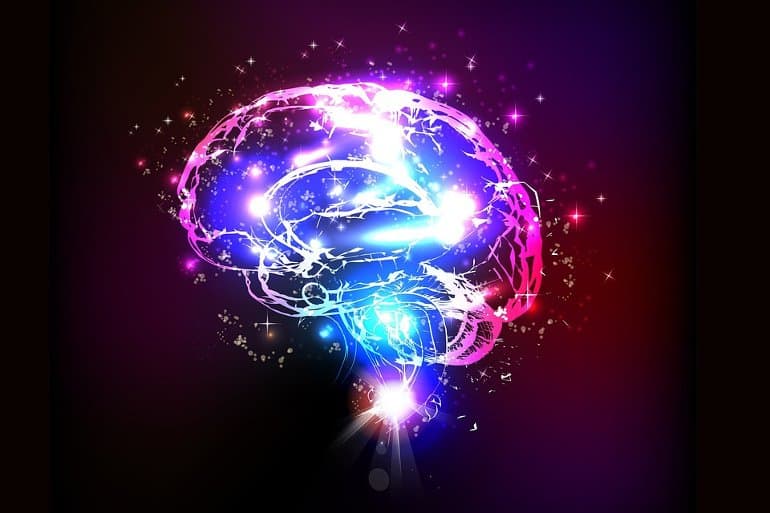Summary: Researchers are currently recruiting patients for a Phase 1 trial of a new immunotherapy treatment for glioblastoma brain cancer.
Source: University of Cincinnati
A new clinical trial at the University of Cincinnati is studying the effectiveness of a new two-pronged immunotherapy treatment procedure to treat the most aggressive and deadly type of brain tumors, called glioblastomas. Originating from healthy brain cells, glioblastomas can form in any area of the brain.
Mario Zuccarello, MD, said surgeons can remove the visible tumor as long as it does not affect areas of the brain that affect function, but microscopic particles of the tissue remain behind no matter how precise the surgeon is. Because of this, treatment typically includes a combination of surgery, radiation and chemotherapy.
Even with advances in the field over the past few decades, he said the tumors return about nine months after treatment in most cases, and most patients do not survive past 12-15 months after original diagnosis.
“Unfortunately the end result, which is an inability to cure the patient, has remained,” said Zuccarello, the John M. Tew MD endowed chair in neurosurgical oncology at the UC College of Medicine, director of the UC Health Brain Tumor Center and a UC Cancer Center member.
“We try to prolong life as much as possible, but the quality of life is a big problem, because these patients are not only subjected to surgical procedures, and sometimes repeated surgical procedures, but also chemotherapy and radiation.”
As researchers continue to discover new receptors and pathways that help the tumors grow, Zuccarello said clinical trials to test new drug targets are essential to move closer to a day where there is a cure for patients with glioblastomas.
UC is currently recruiting for the new trial, operated in collaboration with the Dana-Farber Cancer Institute, a teaching affiliate of Harvard Medical School.
Study methodology
Soma Sengupta, MD, PhD, said the trial will administer the two immunotherapy drugs in tandem with each other. Immunotherapy helps boost and train the body’s own immune system to identify and kill diseased cells.
The drugs work by targeting different immune checkpoint proteins that can act as an “off switch” for immune cells. When the drugs block the interaction of these proteins, the immune cells can potentially become more effective and provide a boosted immune response to attack tumor cells.
This is a Phase 1 trial, meaning research into this line of combination treatment is in its infancy. Patients whose tumors have returned after initial surgery and treatment will be eligible to enroll.
Sengupta, associate professor in neurology, Harold C. Schott Endowed Chair of Molecular Therapeutics (Neurosurgery) and a UC Health neuro-oncologist, said immunotherapy for brain tumors is more complex than other parts of the body due to issues including the blood-brain barrier sometimes preventing drugs from entering the brain.
While the hope is that the drugs will be effective and potentially provide a benefit to patients at this stage, Sengupta said Phase 1 will help the researchers learn more about the biology of the brain’s immune environment.
There is still much to learn about how immune cells and immunotherapy work within the brain, but Sengupta said past clinical trials have shown that approaches with a single immunotherapy treatment have not been successful, leading to the two-pronged approach in this trial.
“There are many questions which are not answered, and we hope that we may be part of something big,” Zuccarello said.
Zuccarello noted the first patients enrolled in the study will help determine the maximum tolerated dosage of one of the immunotherapy drugs, the point where it is effective before causing serious side effects. The second group of patients will be randomly assigned either to receive the two immunotherapy drugs or a placebo prior to tumor removal surgery to test the drugs’ effectiveness.
The importance of collaboration
Sengupta said UC became involved with the trial through collaboration with David Reardon, MD, of Dana-Farber Cancer Institute, the principal investigator of the study. Reardon was one of Sengupta’s mentors during her fellowship at Dana-Farber.
Partnerships with other research institutions are essential in the quest to find a cure for glioblastomas, Sengupta said. Starting in 2021, Sengupta launched a yearly clinical research retreat with other universities primarily located in the Midwest to encourage more cooperation between institutions.

“We discuss ways that we could collaborate and do trials. If there are studies and trials that my patients benefit from with my collaborators, I send them there,” Sengupta said. “And they do the same, because it’s ultimately about the individual and the patient. It’s about helping them survive.”
As an academic research institution, Zuccarello said UC also partners with other physicians in the Cincinnati area to enroll eligible patients in trials even if they are not currently UC Health patients.
“We are serving the community, and we want to make sure that this is not restricted to a small percentage of the population,” he said. “We as an academic center have no restrictions. We serve the entire community and we will be happy to help any neurosurgeon in the region who wants to refer patients to us.”
In addition to other researchers and physicians, Sengupta said participation from the patients enrolled in trials is an essential aspect that is not taken lightly.
“Patients are just amazingly generous with their time, even though they know that they themselves might not benefit, but in the greater scheme of things someone will eventually,” Sengupta said.
Researcher inspiration
Sengupta said research and treatment for patients with brain tumors is personal for her, as she lost a friend to a brain tumor when she was in middle school.
“I promised her as a child that I would help look for ways to help people survive, and I’ve kept my promise,” she said. “And I lose many patients. I form attachments to many and their families, and every time that one of them passes, it makes me feel incredibly sad. I want to find ways to improve their survival and not only extend their lives but improve the quality of life.”
Zuccarello said he has been inspired to continue the search for a cure through his interactions with patients.
“I’ve seen the suffering of a lot of patients through the radiation and inability to fight against brain swelling and then eventually succumbing to the disease,” he said. “So to find answers and eventually solutions will be really an incredible reward for all the patients who have been affected by these tumors. If we can see even the remote possibility that this will provide a relief and maybe a cure, it would be beyond comprehension how good it would be.”
About this glioblastoma brain cancer research news
Author: Tim Tedeschi
Source: University of Cincinnati
Contact: Tim Tedeschi – University of Cincinnati
Image: The image is in the public domain







